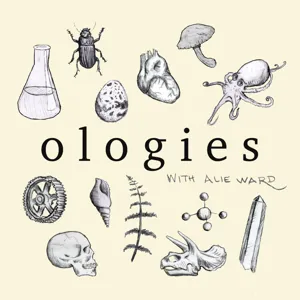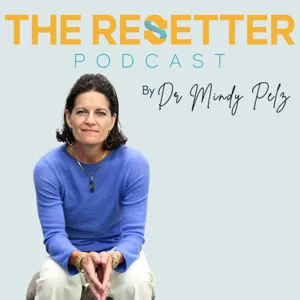Podcast Summary
Exploring the World of Screams with Dr. Harold Gazulis: Dr. Harold Gazulis, a screamologist, studies various aspects of screams, from movie screams to animal screams, emphasizing their functions in expressing emotions and signaling danger.
Dr. Harold Gazulis, a primatologist, research psychologist, and dedicated screamologist, explores the world of screams and their various contexts. Screams are vocalizations produced by forced air, and the term "screamology" was coined for those studying this phenomenon. Gazulis, who has a Greek name and has been working in the psychology department at Emory University since 1984, became known as a screamologist more recently. He studied animal behavior for his undergraduate degree, obtained a master's in psychology, and a PhD in zoology, and completed a postdoc with primates at Rockefeller University. Gazulis's research covers various aspects of screams, including movie screams, animal screams, the difference between yelling and screaming, happy screaming, scream queens and kings, decibels and distance of screams, and screaming in nightmares, among other topics. He emphasizes that screams serve various functions, such as expressing fear, signaling danger, and even releasing pleasure. Gazulis's research adds valuable insights into the human mind and psyche, shedding light on the complex nature of emotions and communication.
Understanding the Unique Characteristics and Functions of Screams: Screams have distinct vocal features and serve various functions in different contexts, including increased social interaction and children's play, particularly during the summer season.
Screams are a unique vocalization with distinct characteristics, such as short duration, high pitch, and roughness. These features can help identify screams from other vocalizations, but they are not exclusive to screams. Screams can be found in various species, including humans, and they serve different functions in different contexts. For humans, summer seems to be the season when more screams are heard due to increased social interaction and children's play. However, there isn't a definitive answer to when or why people scream the most. The study of screams involves understanding their acoustic properties, such as frequency, amplitude, and roughness, as well as their functions and meanings in different contexts.
The function of screams has evolved from self-preservation to social bonding and dominance in primates: Screams, a vocalization type present in various animals, evolved from eluding predators to soliciting support and establishing dominance in primate societies
Screams, as a vocalization type, are evolutionarily conserved and have been present in various animal species, including frogs, rabbits, goats, and even humans. The original function of screams was likely to elude capture by predators, but in the evolution of sociality in primates, they came to serve another purpose: to solicit support from allies, particularly in dominance interactions. Screams require a lot of vocal force and cause the vocal folds to vibrate in a chaotic inconsistent way. The attraction of attention from listeners is another characteristic of screams. While the origins of screams may have been for self-preservation, their function in primate societies has shifted to strengthen social bonds and establish dominance.
The evolution of primate screams for communication during fights: Through instinct and learning, primates recognize different types of screams to determine the context and identity of the screamer, allowing for appropriate intervention.
The evolution of primate screams has allowed for more subtle and nuanced communication during agonistic interactions, enabling allies and relatives to recognize the type of fight and the identity of the screamer, leading to appropriate intervention. This recognition is likely hardwired through instinct and genetics, but the ability to distinguish different types of screams in various contexts is a learned behavior for humans. The availability of recording devices and platforms has significantly advanced research in this field by providing access to large catalogs of naturally occurring and acted screams.
Vervet monkeys use distinct alarm calls to communicate predators: Vervet monkeys communicate about external events through unique alarm calls, challenging the belief that animal communication is only emotional.
Monkeys, specifically the vervet monkey, use different vocalizations as alarm calls to communicate the presence of different predators. This discovery challenged the conventional wisdom that animal communication is limited to expressing emotions. Alarm calls are distinct from screams, which are emotional expressions. Vervet monkeys have evolved a system of vocalizations to refer to specific predators, revealing their ability to communicate about external events. Males and females exhibit different vocalization patterns, with females tending to scream more due to the negative attention they receive when they scream. This learned behavior allows females to maintain social relationships, while males stifle their screams to avoid unwanted attention and potential attacks. This research highlights the complexity of animal communication and challenges the assumption that it is limited to expressing emotions.
Gender differences in reasons for screaming: Women scream in excitement or emotion, men in aggression or intimidation, reasons complex, need further research
There are distinct differences in the contexts and reasons behind the production of screams between genders. Women tend to scream in excitement or emotional response, such as during birthdays, opening presents, or at concerts, while men's screams are often aggressive or intimidating, like in sports or historical contexts. This phenomenon can be observed across various cultures and throughout history. The reasons behind these differences are complex and may involve emotional contagion, evolutionary biology, and cultural norms. While it's an intriguing observation, further scientific research is needed to fully understand the underlying causes of these gender differences in screaming behavior.
The Power and Complexity of Screams: Screams are a universal form of expression that connects us, reveals our uniqueness, and can be used intentionally for acting
The act of screaming, whether it's due to emotional contagion or a conscious choice, has been a part of human expression for a long time. It's not just a reaction to fear or pain, but also a way to connect with others and even find enjoyment. The reasons behind why we scream are complex and can be traced back to our evolutionary past. Screams are not ideal for vocal recognition due to their chaotic vibrations, but they do help expose our unique screams to those close to us, allowing for easier identification. Additionally, good actors can consciously convey emotions through screams, blurring the lines between what is intentional and unintentional. Overall, screaming is a powerful and universal form of expression that continues to intrigue and fascinate us.
The Art of Screaming in Acting: Actresses like Faye Ray, Jamie Lee Curtis, Kate Capshaw, and Kim Basinger are famous for their convincing screams in films. The origins of the scream can be traced back to societal fears and anxieties, but both men and women can deliver memorable screams in various genres.
The ability to convincingly produce screams in acting is a skill that some people possess naturally. Research has shown that it can be challenging for individuals to distinguish between real and acted screams. Throughout film history, there have been notable "scream queens" such as Faye Ray from King Kong, who became famous for their distinctive screams. These actresses, including Jamie Lee Curtis, Kate Capshaw, and Kim Basinger, have provided memorable performances in various genres. While the origins of the scream in films can be traced back to societal fears and anxieties during the Great Depression, as explored by sociologist Juan Antonio Roche Carcel, these actresses continued to captivate audiences with their screams. Contrary to popular belief, there is no such thing as a "scream king," but men's screams in response to surprises can also be found in various films and television shows. For instance, the actor Nick in the TV show New Girl is known for his surprised screams.
The Evolution of Screaming in Media: Males as the 'Screamers': Film critic Rachel Roth identifies Jake Johnson, Bruce Campbell, Evan Peters, Daniel Kaluuya, and Homer Simpson as notable 'Scream Kings.' Believability is crucial for effective screams, and the Wilhelm scream is a famous stock sound effect.
The role of screaming in media, particularly in films and TV shows, has evolved over the years, with males becoming the "screamers" instead of just monster bait, as noted by film critic Rachel Roth. Jake Johnson, known for his role as Nick Miller on New Girl, is one such certified "Scream King," according to Roth, along with Bruce Campbell from the Evil Dead movies, Evan Peters from American Horror Story, and Daniel Kaluuya from Get Out. Homer Simpson, despite not being a typical "screamer," is also iconic for his distinctive scream. The Wilhelm scream, a recognizable stock sound effect used in movies since the 1950s, is another notable example. However, believability is key when it comes to screams, and longer, less believable screams tend to be less effective. For more in-depth research on human screams, refer to Harold's 2021 paper, "The Emotional Canvas of Human Screams: Patterns and Acoustic Cues and the Perceptual Categorization of a Basic Call Type," conducted at Emory's bioacoustics lab.
The Science Behind Human Screams: Duration, Intensity, and Emotional Impact: Screams serve as a defense mechanism and can travel long distances, making them an effective means of seeking help or deterring predators. Anger screams are the longest and loudest, and understanding the science behind screams can help us appreciate their importance in dangerous situations and emotional experiences.
The human ability to scream is a complex phenomenon influenced by various factors such as emotions, acoustic environments, and individual differences. Screams serve as a defense mechanism and can travel considerable distances, making them an effective means of seeking help or deterring predators. However, not everyone can scream loudly when needed, and this inability might be due to various reasons, including psychological factors or physical limitations. The study mentioned in the discussion provides valuable insights into the duration and intensity of different types of screams, with anger screams being the longest and loudest. While the volume and travel distance of screams can save lives in dangerous situations, they can also evoke strong emotions and memories, as depicted in the chilling opening of Helter Skelter. Overall, understanding the science behind screams can help us appreciate the importance of this basic yet powerful human response.
The Ability to Scream: A Cathartic Response to Stress: Screaming can be a cathartic response to stress, releasing endorphins, but not always an effective communication tool. Individual abilities to scream vary, and social contexts should be considered.
The ability to scream, especially during times of danger or stress, varies among individuals. Some people can consciously produce a scream, while others may not be able to due to factors such as REM sleep muscle paralysis or brainstem lesions. Screaming can be a cathartic release, providing relief during stressful or emotional situations. This response to stress may be linked to the release of endorphins, which are produced by the hypothalamus and pituitary glands. While exercise can also trigger the release of endorphins, some people may find screaming to be a more effective way to cope with stress or anger. However, it's important to note that screaming is not always an effective communication tool, especially in certain social contexts, and can have negative consequences if overused. Additionally, infants may not be able to distinguish between happy and angry screams, as both types of screams involve similar vocalizations and intensity levels.
Unique Human Forms of Nonverbal Communication: Laughter and Screams: Humans use laughter and screams in more elaborate and nuanced ways than animals, with laughter having various forms and screams potentially releasing endorphins and providing pleasure in social contexts.
Humans have unique forms of nonverbal communication, such as laughter and screams, due to our cognitive abilities and language development. Animals, like chimpanzees, produce simpler versions of these sounds in specific contexts, but humans use them in a more elaborate and nuanced way. Laughter, for example, is not just a response to tickling, but also used in a variety of situations, including genuine, fake, and derisive laughter. While there is no strong scientific evidence that screaming as a form of therapy is effective, there is evidence that it can release endorphins and provide a pleasurable experience, especially in social contexts like roller coasters or haunted houses. Additionally, weightlifters have been known to scream while lifting weights, and improper screaming can indeed damage the vocal cords, as is the case with metal vocalists.
Exploring the Science of Screaming: A Fascinating Field of Study: Techniques like false cord screaming and lessons from vocal coaches help prevent harm to vocal cords during extreme vocalizations. The fascination with screams in popular culture fuels ongoing research in this field.
While there is concern about the potential damage to vocal cords from certain types of vocalizations, such as those used in death metal and other extreme music genres, there are techniques and resources available to help vocalists scream without causing harm. These techniques include false cord screaming and lessons from experienced vocal coaches. Additionally, the fascination with the scream in popular culture, from horror movies to art, highlights the importance of this vocalization and the ongoing research in understanding how the brain processes different types of screams. Being a screamologist involves answering unanswered questions, recruiting participants for studies, and potentially conducting brain imaging research to further explore this intriguing area of study. Despite the challenges, the curiosity and interest in this field make it an exciting area for future research.
Exploring the world of animal behavior and communication: Researching animal behavior and communication is challenging but rewarding. Ask big questions and seek answers, even if they're not immediately available.
Being a researcher, particularly in the field of animal behavior and communication, comes with its challenges and frustrations, but the curiosity and desire to explore and understand the world around us is what makes it rewarding. The ability to teach and inspire students to think differently about the world is an added bonus. Dr. Harold Gazulis, or the "world's most recognized screamologist," finds joy in both his research and teaching, despite the limitations and frustrations that come with it. It's important to ask big questions and seek answers, even if the answers aren't always immediately available. And who knows, you might just discover something new and exciting along the way.
Discovering new passions through simple questions: Asking simple questions and embracing new experiences can lead to personal growth and unexpected passions. Keep going on tough days and remember the importance of learning and celebrating imperfections.
Embracing new experiences and asking seemingly simple questions can lead to significant personal growth and the discovery of unexpected passions. The speaker was inspired by a podcast review to volunteer for a youth empowerment organization, which led her to realize her love for working with students. Three years later, she landed her dream job directing a college STEM scholarship program. She encourages listeners to ask "stupid" questions and to keep going on tough days, as reviews and listener support help keep the show going. The importance of learning, celebrating imperfections, and asking questions, no matter how simple, was a recurring theme in the episode. The speaker's experience serves as a reminder that change is possible and that every day presents an opportunity for growth.






